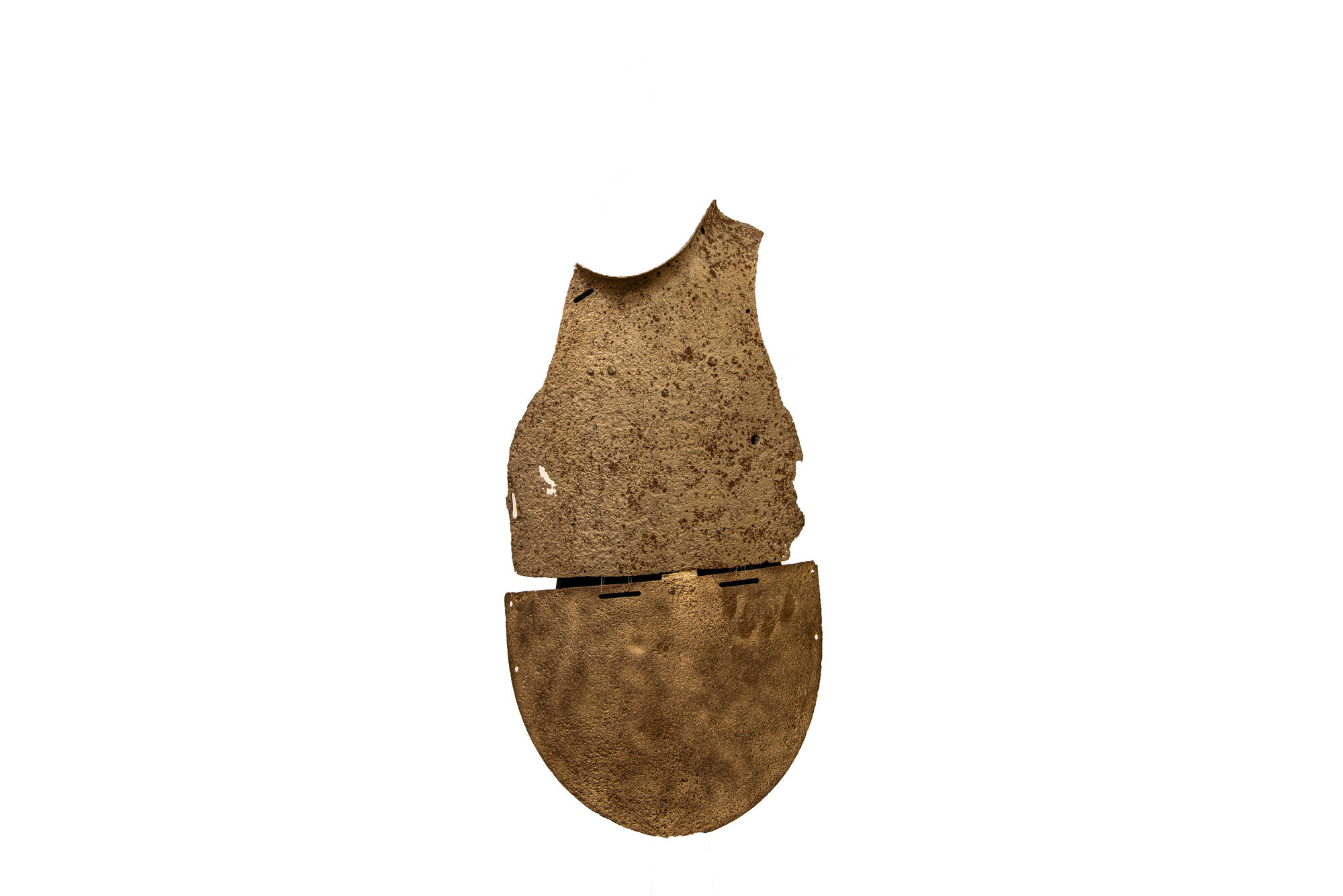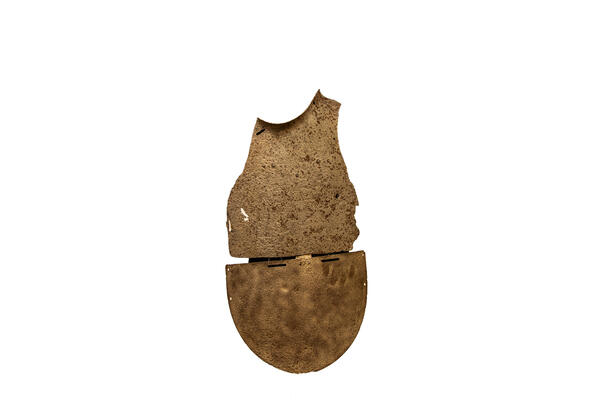During the Great Patriotic War of 1941-1945, special steel breastplates (SB) were used to in the USSR protect the soldiers from bullets and shell fragments. In their shape, they resembled German breastplates used in the First World War, but were lighter and left the right shoulder open so that it was more convenient to shoot.
There were several models of steel breastplates. Some of them resembled the Roman lorica segmentata — personal armor that consisted of metal plates. Others were made out of solid shields of various thicknesses and shapes — for example, the CH-42, which is displayed in the exhibition.
Primarily, the steel breastplates were supposed to protect the Assault Engineering Brigades soldiers of the Supreme High Command Reserve. They were considered to be elite special assault units.
Not all of the soldiers were liked this element of equipment: breastplates could not protect them during battles in open terrain. At the same time, they covered only the front part of the body, the back remained open. The soldiers approached the enemy’s positions mainly by crawling or by short rushes from cover to cover. If they were detected, the breastplate did little to protect them from powerful rifle-machine-gun bullets.
However, in urban terrain, this equipment effectively protected against submachine guns bullets fired from a distance of more than 50 meters. They were widely used for close combat at that time. In addition, fragments of mortars or hand grenades, which could very heavily injure the soldiers in a confined space, were less dangerous for the fighters. The breastplates protected from light rifle bullets fired from a distance of more than 600 meters. Heavy rifle and machine-gun bullets penetrated the breastplates from almost any distance.
The breastplate was made out of 2 mm thick steel sheets. It weighed about 3.5 kilograms, and the protection area was 0.2 square meters. In comparison to modern standards, the breastplate roughly corresponds to a second-class bulletproof vest both in weight and in protective qualities.
There were several models of steel breastplates. Some of them resembled the Roman lorica segmentata — personal armor that consisted of metal plates. Others were made out of solid shields of various thicknesses and shapes — for example, the CH-42, which is displayed in the exhibition.
Primarily, the steel breastplates were supposed to protect the Assault Engineering Brigades soldiers of the Supreme High Command Reserve. They were considered to be elite special assault units.
Not all of the soldiers were liked this element of equipment: breastplates could not protect them during battles in open terrain. At the same time, they covered only the front part of the body, the back remained open. The soldiers approached the enemy’s positions mainly by crawling or by short rushes from cover to cover. If they were detected, the breastplate did little to protect them from powerful rifle-machine-gun bullets.
However, in urban terrain, this equipment effectively protected against submachine guns bullets fired from a distance of more than 50 meters. They were widely used for close combat at that time. In addition, fragments of mortars or hand grenades, which could very heavily injure the soldiers in a confined space, were less dangerous for the fighters. The breastplates protected from light rifle bullets fired from a distance of more than 600 meters. Heavy rifle and machine-gun bullets penetrated the breastplates from almost any distance.
The breastplate was made out of 2 mm thick steel sheets. It weighed about 3.5 kilograms, and the protection area was 0.2 square meters. In comparison to modern standards, the breastplate roughly corresponds to a second-class bulletproof vest both in weight and in protective qualities.



